Kamakhya Devi Temple is situated amidst a large human settlement on the Nilachal Hill in the city of Guwahati, the city considered as the Gateway to the North East India. It is a very sacred temple for The Hindus and counted among the 51 Shakti Peethas of Hindu Mythology. It is also counted among the four primary (Adi) Shakti Peethas and among the eighteen Maha Shakti Peethas.
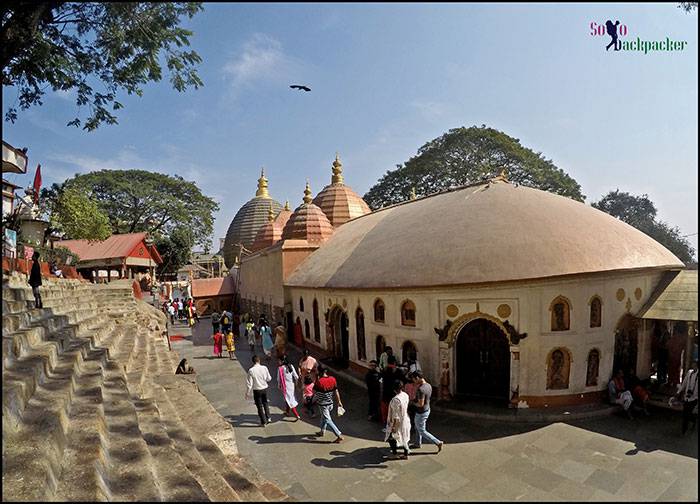
Most of the visitors arriving in the city of Guwahati has the sole purpose to visit this temple to get the blessings of Kamakhya Devi. It is believed to be 2000 years old, however, in such a long existence, it was destroyed and built several times. The current structure is about 500 years old. The temple is dedicated to Mata Kamakhya Devi (also known as Shakti). It is also a major pilgrimage center for Tantric Worshippers in India. It is considered as the birthplace of modern Shaktism.
Contents
1. Mythological Legend of Kamakhya Temple
2. How to Reach Kamakhya Temple?
4. Entry Tickets to Kamakhya Temple
5. Reaching Garbhagriha or Inner Sanctum
6. What are allowed inside the temple?
7. Performing a Special Prayer
1. Mythological Legend of Kamakhya Temple
It was the place where the yoni (genitals) of Goddess Sati felt during the tandav nritya (dance) of Lord Shiva with the burning body of Goddess Sati. The legend goes back to the time of The Great Yagya, organised by the King Daksha. He invited every notable person in the universe, except his daughter Sati and her husband Lord Shiva. Despite of the unwillingness of Lord Shiva, Sati went to her father’s home, only to receive humiliation and dishonour. In the grief and anger, she sacrificed her body at the altar of the yagya.
When Lord Shiva heard this news, he came there and destroyed the yagya. In the rage of losing her beloved wife, he stared the Tandav Nritya , with the burning body of Sati. Because of this, the parts of the burning body started falling on the earth one by one and that way, 51 shaktipeethas came in existence at 51 different places, mainly in India, Sri Lanka, Bangladesh and Pakistan.
2. How to Reach Kamakhya Temple?
Kamakhya Temple is situated on the edge of the Nilachal hill at the height of approx. 800 feet. It is about 5 km from Kamakhya Junction (Railway Station), 7 km from Guwahati Railway Station and 20 km from Guwahati Airport. Direct Public Buses are available from many places in Guwahati like Maligaon (one km walk from Kamakhya Junction), Khanapara, Jalukbari, Paltan Bazaar (Guwahati Railway Station), Pan Bazaar, Chandmari, Dispur, Six Miles etc. The public buses drop at the base of the hill, popularly known as Kamakhya Gate. From there, shared vehicles (mostly Omni Vans) are available to the temple (fare Rs 20 per passenger), about 3 km uphill from the base.
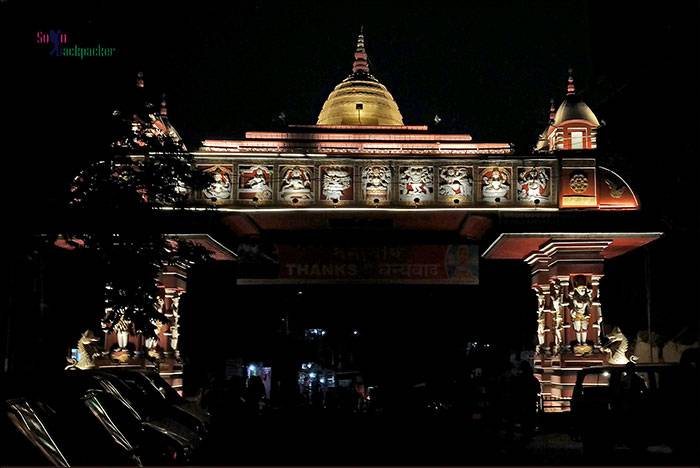
There are direct AC buses available from Guwahati Airport to Paltan Bazar at every hour from 0600 AM to 0600 PM. These buses can drop you at Kamakhya Gate (Fare is flat Rs. 120 per passenger). Ola and Uber are also available from the airport to the Kamakhya Temple. If you don’t have too much luggage, you can also book motorbike taxi from Ola/Uber/Rapido from anywhere in the city or from the airport.
Read about other beautiful places to visit in Guwahati: A Gateway to the North East India
3. Timings of Kamakhya Temple
Daily from 0730 AM to 0100 PM and then from 0230 PM to 0530 PM. To avoid rush, better to visit in the afternoon. In the morning, the temple opens after the morning aarti and in evening it closes after the evening aarti. You can stay outside the temple gate during the evening aarti to get the halwa prasad after aarti.
4. Entry Tickets to Kamakhya Temple
On a crowded day, it may take up to 8-10 hours to enter the inner sanctum (garbhagriha) of the temple. Paid tickets are available for the devotees to avoid the hassle of a general queue.
Different kind of entry procedures for the devotees are:
1. General Entry
It is free of cost. But the queue starts in the early morning normally from 0500 hrs, on auspicious days it may starts from 0300 hrs! and goes on throughout the day. It may take at least 5-6 hours to reach the inner sanctum. The general queue starts near the museum on the right-hand side after entering in the temple premises through the main entrance.
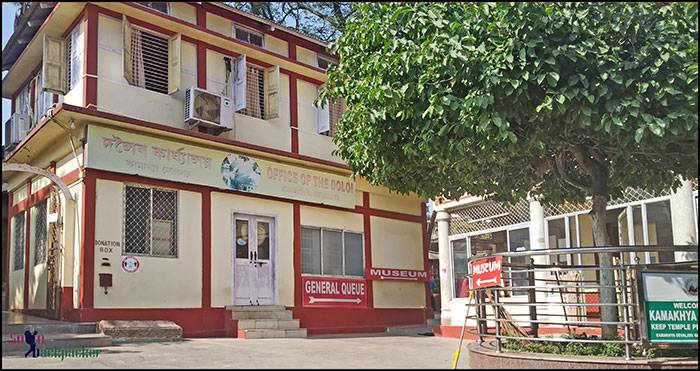
2. Special Entry for Defence Personnel
A separate entry ticket is available for the personnel from defence as well as paramilitary forces after producing the original identity cards. The cost of the ticket is Rs 50 per person. After getting this ticket, you may get into the temple through a shorter route. The Defence ticket counter timings are from 0700 AM to 0800 AM and from 0300 PM to 0330 PM every day, except Sunday Afternoon. The ticket counter is located near the information centre on the left-hand side after entering in the temple premises though the main entrance.
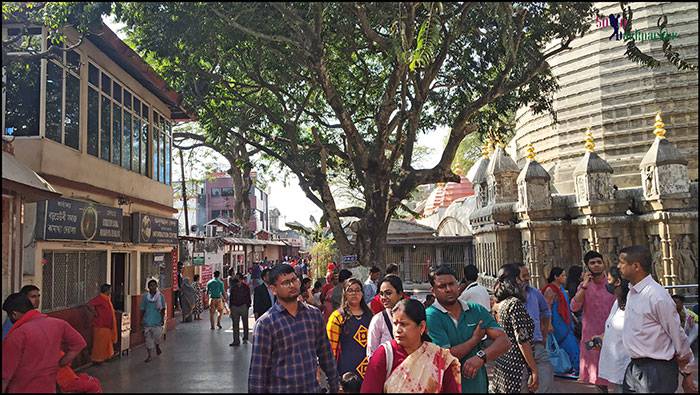
3. Special Entry Coupons
Special entry coupons/tickets are available at the cost of Rs 501 per person. They are available for two batches in the morning and two batches in the afternoon. Each batch has approx 100 person. The morning tickets are available from 0700 AM onwards and afternoon tickets are available from 0230 PM onwards. Normally, the special tickets sell goes on for one hour in the morning and one hour in the afternoon.
After buying special entry coupon, you can expect to reach the inner sanctum within one hour to two hours depending on the crowd in the temple.
4.VIP Passes
VIP Passes are issued free of cost by the district authorities for the higher dignitaries. On a normal day, the pass-holder can expect to reach inner sanctum within one hour.
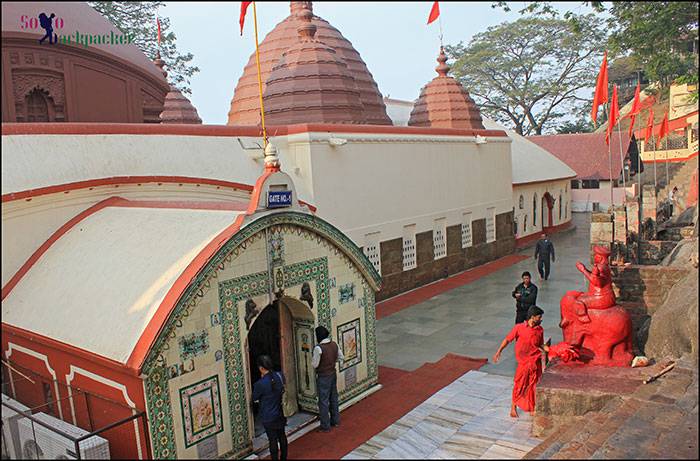
Entry Patterns
Despite of the entry tickets/coupons/passes, the temple management has a set pattern to accommodate the devotees inside the main portion of the temple. On a typical day, the entry starts with one lot of devotees (approx 100) from the general queue, then 50-60 devotees from the defence queue and then other devotees from the special entry coupons queue. This pattern repeats in a cyclic manner. This way, unless it is very crowded day, a general queue requires at least 4-5 hours, defence queue requires at least 2 hours and direct queue requires at least 1 hour for the entry in to the main sanctum.
After entering in the main hall of the temple, all kind of queues merge in a single one and proceeds slowly towards the inner sanctum.
Read about Mata VAishno Devi Yatra: Adi Kuwari Devi Temple to Bhawan
5. Reaching Garbhagriha or Inner Sanctum
The garbhagriha of the temple is basically a dark room, below the ground level. It is small, dark and reached by narrow steep stones from the hall. The path is so narrow that two people cannot pass side by side comfortably without rubbing the shoulders. Only 2-3 small lamps are there inside the cave, so it is very hard to see anything clearly.
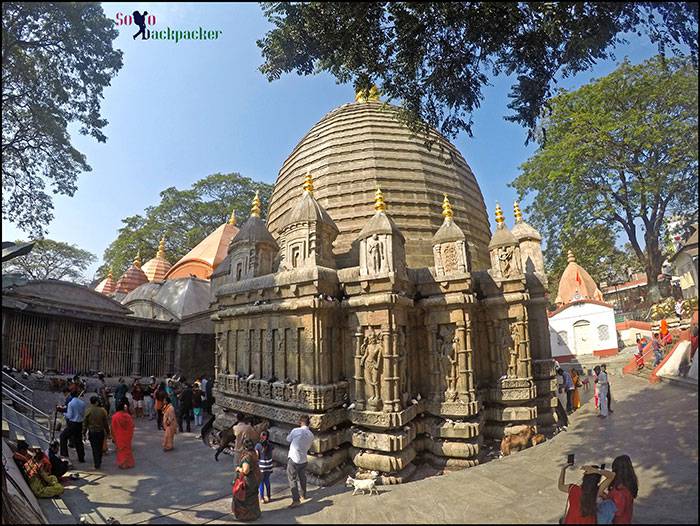
Inside the garbhagriha, there is no image or sculpture, but a yoni-shaped rock fissure, about 10 inches deep, that is considered as the main deity. It usually remains covered with the flowers and other offerings. Generally, it’s very difficult to see that rock fissure because of the darkness. The hallow rock-fissure is consistently filled with an underground water spring. The main intention of the devotees is to touch the holy water present around the main deity. On a less crowded day, people also used to collect some water in the small bottles to carry with them.
6. What are allowed inside the temple?
Cameras and mobile phones are allowed in the temple premises. Photography is not allowed inside the main temple as well as in the inner sanctum. Backpacks are not allowed, but small ladies bags are allowed inside the temple. Shoes are not allowed, even in the temple premises. Better to remove them at one of the prasad shop outside the temple.
7. Performing a Special Prayer
There are lot of people known as Pandas are available in the temple complex to perform a special pooja or ritual for the devotees. In their orange clothing, they are clearly visible near the main entrance. Pandas generally charge a heavy fee to perform the rituals. Better to negotiate the price in advance before hiring them for a special pooja.
8. Prasad and other Souvenirs
There are series of shops on both the sides of the lane starting at least 300 meters before the temple. From the first shop itself, the shopkeepers request to remove the shoes and buy the prasad and other offerings. Typical offerings include a coconut, a packet of peda ( a kind of sweet), a packet of lachidana, a chunri, a small box of sindoor and some incenses.
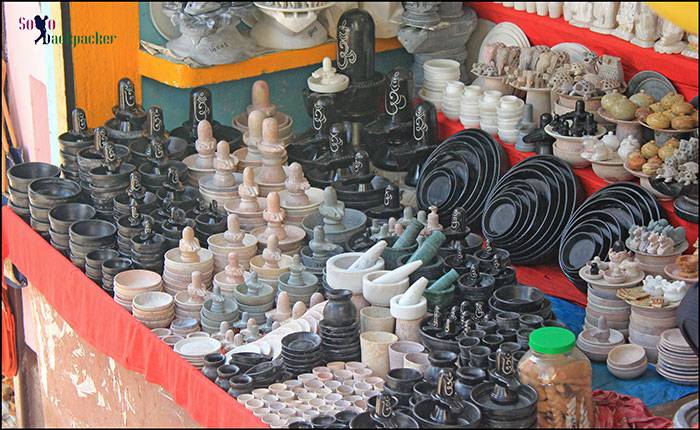
9. Other important places
Other important places inside the temple premises are:
Place for Lighting Diyas
A small room is there to light diyas and incense. There are 7-8 rows of stands available for this purpose.
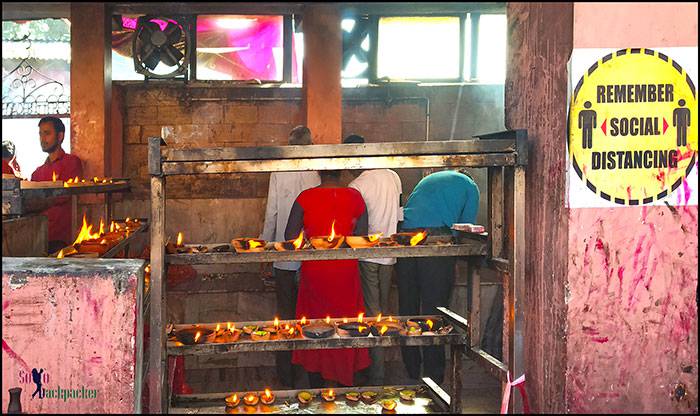
Place to Offer Coconut
A separate place is there to offer coconuts. A metal rod is fixed on a container where people break their coconut to offer it to the goddess.
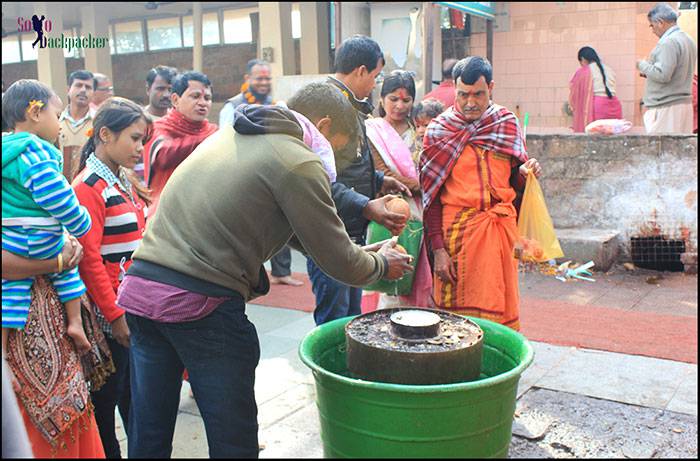
Place to Tie the Thread
There is also a tree to tie the threads/chunri.
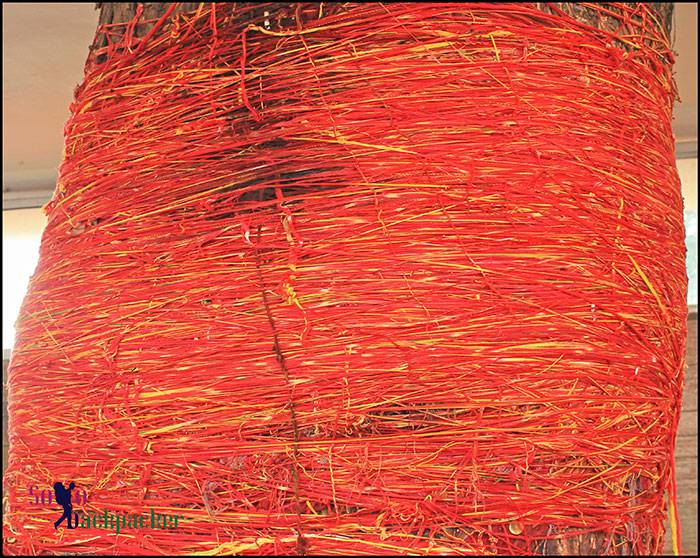
Place to perform Sacrifice Rituals
Kamakhya temple is a major center of Tantric rituals in India. Due to this, a large number of rituals having animal (particularly goats) sacrifices take place everyday. Devotees come every morning with goats to offer to Devi Shakti. Devotees can also buy these animals from the temple premises.
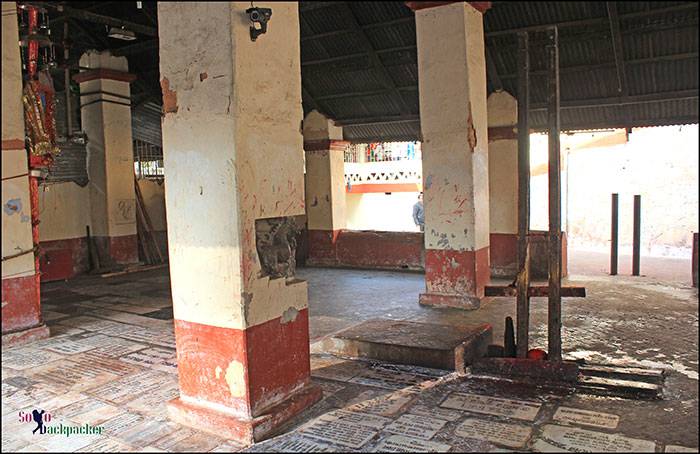
There is a big hall in the temple premises, where this ritual takes place. A wooden slab fitted with the tool to cut the head of the animals is clearly visible in the hall. The blood is visible everywhere, in every corner of the drains spread around the sacrifice hall and main temple building.
10. Ambubachi Mela at Kamakhya Temple
Ambubachi Mela is the most celebrated annual festival at Kamakhya Devi Temple. It is celebrated generally during monsoon season in the Assamese month of Ahaar, around the end of the June month. It is believed that the presiding goddess of the temple, Devi Kamakhya, the Mother Shakti, goes through her annual cycle of menstruation during this period. Therefore, the annual celebration of Ambubachi marks the yearly menstruation course of goddess Kamakhya.
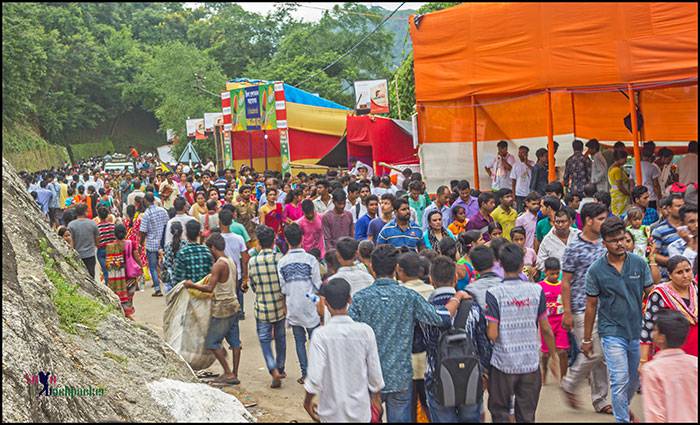
The temple remains closed for three days during the mela. After three days, goddess is bathed and other rituals are performed. Then the doors of the temple are reopened and prasad is distributed. On the fourth day the devotees are allowed to enter the temple.
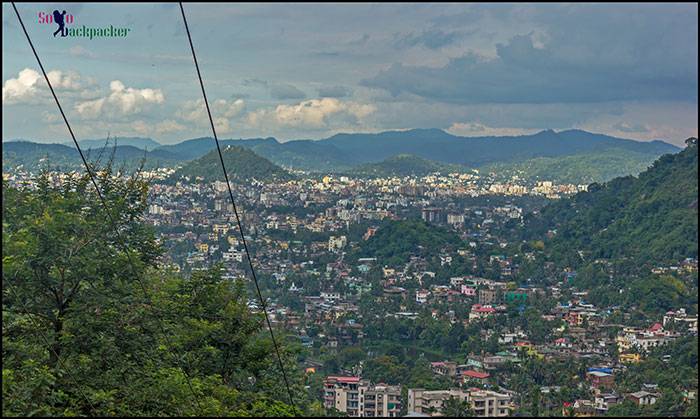
Every year lakhs of devotees come to Guwahati to observe this festival. You can see thousands of visitors walking uphill on the road form Kamakhya Gate to the temple. No vehicles are allowed on the uphill road during this festival. Most of the devotees arrive to collect the special prasad of the goddess. The prasad is distributed in two forms- Angodak and Angabastra. Angodak literally means the fluid part of the body – water from the spring and Angabastra literally means the cloth covering the body – a piece of the red cloth used to cover the stone yoni during the days of menstruation.
Read about Pobitora Wildlife Sanctuary near Guwahati: The Great Indian One-Horn Rhinoceros at Pobitora
11. Temples of Ten Mahavidyas
The ten great Mother Goddesses of Wisdom, collectively known as the Das Mahavidyas, are integral part to Tantra Sadhna. They all hold an important place on the Nilachal Hill. Ten Mahavidyas are Bhuvaneshwari, Shodasi (Tripura Sundari), Matangi, Kamala, Tara, Baglamukhi, Dhumavati, Bhairavi, Kali and Chinnamasta. Shodasi (Kamakshi Devi or Mata Kamakhya) is the resident deity of this religious site. Matangi and Kamala are also seated in the garbhagriha of the main temple, to the east of the main deity. The temples of all other seven mahavidyas are scattered through the temple complex and the Nilachal Hill having Bhuvaneshwai Temple at the farthest end, about one km from the main temple.
Baglamukhi Mata Temple
The temple is situated at a distance of 10 min walk from the parking area outside the Kamakhya Temple. The temple has seen massive renovation. All of the ten mahavidyas are beautifully depicted on the wall of this temple.
Bhuvaneshwari Temple
The temple is situated on the top of the Nilachal Hill. It is about one km from the Kamakhya Temple. The well-paved road leads towards the temple. The hike is not so steep and easily doable in 15-20 minutes. Shared Omni vans are also available from the parking area of Kamakhya Temple to Bhuvaneshwari Temple (Fare-Rs 10 per passenger). Viewpoint near Bhuvansehwari Temple offers a great view of North Guwahati, on the opposite bank of Brahmaputra River.
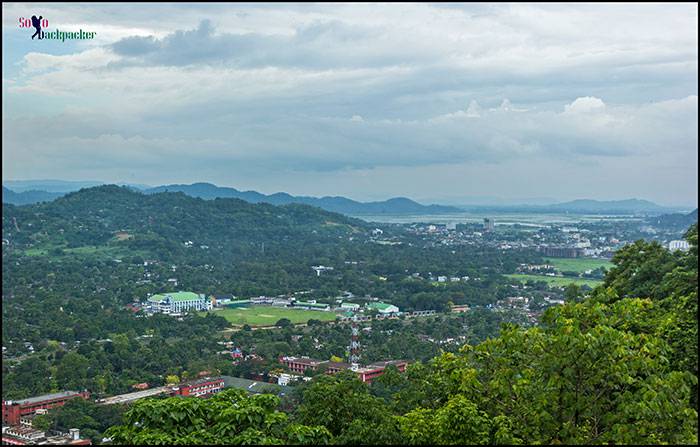
In fact, there are many viewpoints on the road leading to Kamakhya Temple from the base of the hill. The best views of Guwahati city is available from the viewpoints located on the road before reaching the Kamakhya Temple. During the monsoon season (or anytime), when everything is wrapped in a Green cover, it is recommended to descend from the temple to the base of the hill by a simple walk rather than by a vehicle to enjoy the surrounding beauty.



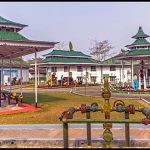

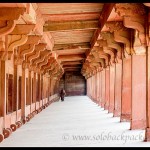
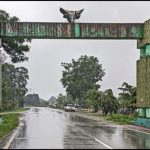

Thanks for excellent info…
Thanks for the in depth know how , and superb guidance
The info is precise and valuable… thanks
Thanks for providing the valuable information. I would like to get a guidance for 1 day stay comfortably to have darshans and the chant with a reliable priests. I have been there almost 25 years back…. Expecting a valuable response…
Thanks
Nandanraja
Sir very good information & very useful. thank q very much.
sir where can i get the original Kamakhya Sindoor, could u give full information about this like price & etc.,
thank q very much
Hi, I have no idea about this.
I don’t have words enough to THANK YOU for all the detail step by step precise and precious information you have provided here on this lovely site.
Last year I went to Kamakhya reading about it for days in advance online. Spending round about 50,000+ yet. Didn’t get to inner sanctum on the very important date of Ambuvaasi mela, that is the main first day when the gate opens after 3 days of Pooja, when the Red clothe is given as prasad.
This year again i’ll be going there in June on Ambuvaasi mela but all thanks to YOU and your efforts of providing precise information. I am hoping to get the Red clothe in prasad.
hii ..i hope u doing good…i m also planning to go kamakhya temple
Valuable information given….
Thanks for this.
I am planning to visit maa kamakhya Temple in June..
Thanks a lot for this! Its crisp and to the point! Keep it up
Very bad service .This palace make abussnes
By lokality and trusty
I’am a solo bag-packer & I don’t intend to stay in Guwahati. I’am just going there to visit the Kamakhya temple. Where can I store my bag-pack during my visit to the temple.
Thank you for the above post. Valuable information!!
You can keep that at any shop outside the temple. Just buy some prasad for 20-30 rupees and the shopkeeper will happily keep your luggage for a while.
Very detailed description, just what we were looking for. Thanks a lot for this blog. BTW, we are travelling next week to Guwahati, yes, despite the flood warning. Any other places in and around Guwahati that we could visit? Just name all the good ones.
Pabitora Wildlife Sanctuary near Guwahati, Shillong is a short drive away and root bridges in Cherapunji, Meghalaya is also worth visiting. You can cover all these in 3-4 days.
Thank you for valuable information
I had a wonderful period in gauhati visiting devi temple shilling and cannot forget my stay at balaji temple amd mr muthuswamy of the balaji temple I look forward to visit the temple again and sit there for an hour making dyan and prayers
Very good information !
excellent information I like this very much
very useful information …kudos to u
Good information.
It’s very specific informetion of temple, entry que with fees.Thank You…..eagerly waiting to go and get blessings of Mata.
very informative. thanks and thumbs up
How can I perform puja online during Ambubachi. Please furnish contact numbers to enable me to offer puja online during Ambubachi and get Prasad and Nirmalya.
My email address is “akankhadey@gmail.com”
Hi, I don’t know exactly about the online Puja. However, if you search on the web, there is a website onlineprasad.com. They may help you regarding this. Their contact details are available on the website.
EAGERLY WAITING FOR VISITING AND BLESSINGS
Nice post!
The informations are most accurate and helpful for new visitors to this Temple .
Hey gud to see you there again.How have you been?
Hi Ankita, I am fine. Hope you are doing great. How is the travel?